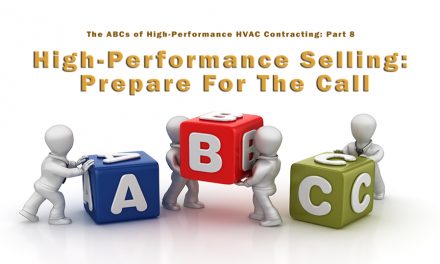‘Our mission here is to drive payroll of the service department up as high as
possible, because this may be the only way to maximize consistent profitability.’
You may be thinking, this guy is nuts.
Well, he is not. To set the stage let’s review some basic metrics.

We know that, in a residential retail operation, service labor should be something below 22% of service revenue. If this is not being tracked and used as a leadership tool, this may be a good first step in managing labor costs.
Before we begin to plan for methods to drive profitability in the service department, it may be helpful to assess the realities of the technician world in the 21st Century.
The Technician
Reality 1: Many senior technicians see a lack of accountability to be one of the perks even though their R/H may not be the best.
Reality 2: As demand for service work slows, the clock gets milked.
Reality 3: Many techs feel that after a season of working 10 to 14 hours a day, they deserve to be able to work at a slower pace. Any corrective efforts are met with resentment.
Reality 4: Regardless of the inefficiencies and lack of effectiveness, employees continue to receive their paychecks. This lavishly rewards, and sometimes cements, unproductive behavior.
Reality 5: Technicians often view their role as ‘customer protector’ from the boss’s prices. For instance, $225 for replacing a capacitor (an $11 part), might seem unfair. This is easy to address, which we can discuss another time.
Hopefully, this doesn’t create too bleak of a landscape because all these issues can be positively impacted by the plan we are about to review.
The Math
Warning: Do not have a meeting about a new compensation system for techs.
It is absolutely necessary to walk through a Transition Management process, that may take as long as six months, before rolling out this plan.
Good contractors have squandered a great opportunity by skipping the necessary transitioning steps.
From here we will walk through the fundamentals of Revenue per Hour (R/H) and Revenue Sharing (R/S), and then we will walk through a sample of how contractors can handle the transition management well.
Revenue per Hour – Historically, base labor costs should be under 22% of service revenue. This labor rate presumes a slow but competent technician. And we know that many competent technicians can complete the communication requirements and mechanical tasks more quickly without rushing.
This is one area where you can reward productivity and make the service department more profitable.
For many companies, when the R/H is $110.00, labor is around 22% of Service Revenue. Here’s the idea illustrated presuming a 40-hour workweek and what a $20 increase in R/H means for profitability.
Let’s call the labor that is attributable to the technician’s overproduction a monthly Revenue Share. This is not a bonus, but it is less than 20% of revenue. This is already budgeted in the flat rate labor calculations. It could be viewed as just paying the technician what he earned with his overproduction.
Click below for next page:













Recent Comments